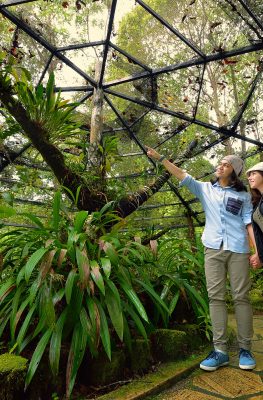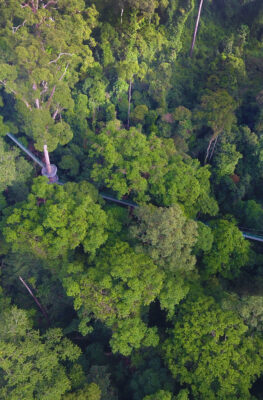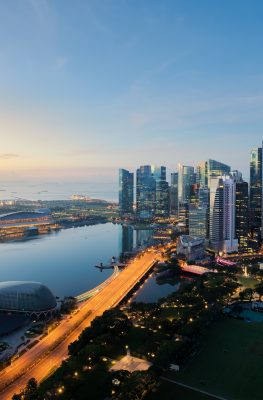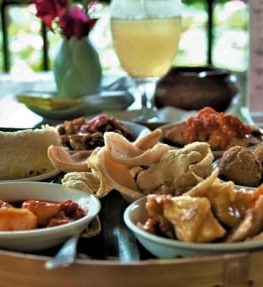Published on March 6, 2018
Grand Palace, Bangkok, Thailand. Image courtesy of Tourism Authority of Thailand
Most of the ruling dynasties that once ruled over Southeast Asia may have gone the way of Ozymandias, but their glittering palaces remain. These stately homes used to house entire governments, maintaining the power of life and death over millions.
Today, Southeast Asia’s palaces may not have as much actual power as they used to wield, but they continue to impress the first-time visitor. Gilded roofs, spacious hallways and stern-looking guardian statues all combine to make these structures some of the region’s must-see places.
We asked some bloggers to describe their favorite palaces, and the answers did not disappoint.
Grand Palace, Bangkok, Thailand. Image courtesy of Craig Russell
Bangkok, Thailand’s Grand Palace
Craig Russell of No Real Plan (Facebook|Twitter|Instagram) will always rank Bangkok’s Grand Palace as first in his heart: “It was my first experience of a royal palace in South East Asia,” he recalls. “I had just landed in Thailand on the first stage of my round the world solo trip and my senses were already overrun with everything that Bangkok had to offer.”
The Grand Palace is tied up with the development of the monarchy in Thailand. Once the nerve center of the Thai autocracy, this sprawling complex of temples, palaces and gardens housed the King, his family and his government from its construction in 1782 to the abolition of the absolute monarchy by 1932.
Even today, the Grand Palace retains the ability to astonish. “I was struck with amazement by the sheer size of the place,” Craig says. The Temple of the Emerald Buddha (Wat Phra Kaew) and the Grand Palace’s Boromabiman Hall and Amarinda Hall are just a few of the structural highlights you’ll find here: “It is not just one building, but an entire complex that is over 200,000 square metres,” Craig tells us.
The Grand Palace is one of Bangkok’s most popular tourist destinations – Craig offers a few tips for first-time visitors. “I’d recommend getting there early to not only beat the crowds but to also beat the heat, as you are often outside wandering around,” he recommends. “And make sure you read up on the dress code first!”
Kanbawzathadi Palace, Bago, Myanmar. Image courtesy of Marya Sutimi.
Bago, Myanmar’s Kanbawzathadi Palace
Marya Sutimi of the BeauTraveler (Facebook|Twitter|Instagram) had a serendipitous encounter with Kanbawzathadi Palace while visiting Bago, Myanmar on a whim.
“It was more like a spontaneous trip that I had with a guy that I used to date, who wasn’t an organized traveler,” Marya explains. “We only decided places to go by the time we arrived at the hotel and checked out their tourism magazine – we ended up going to Bago the next day as we saw an article about the city in it.”
The tour led the pair to Kanbawzathadi Palace, a reconstruction of a royal residence from one of Myanmar’s lost golden ages. “It was built by King Bayinnaung of the Taungoo dynasty, a vast empire that included much of present-day Burma, Thailand and parts of China,” Marya says. “The real palace was burnt down in 1599 during armed conflict, and the Burmese government only decided to rebuild the palace in the late 20th century.”
The original Palace had 76 main halls, but only a few have been reconstructed for tourists’ benefit – among them the Royal Lion Throne Hall and the Bhammayarthana Throne Hall. There are no artifacts visible from Bayinnaung’s day in these main halls. No statue, even, of the King himself: “there was only this cardboard standing figure,” she recalls. “It was a bit bittersweet to finally know the history behind the palace.”
A separate Nandawya Museum hosts the actual artifacts dug up from the palace grounds, including teak pillars dating back to the 16th century, old coins, and rusted swords. (The Lion Throne that originally took pride of place in the Lion Throne Hall stands in a museum in Yangon.)
Royal Palace in Phnom Penh, Cambodia. Image courtesy of Kristina Stamp.
Phnom Penh, Cambodia’s Royal Palace
Maptrotting‘s Kristina Stamp (Twitter|Facebook|Instagram) found Phnom Penh to be a “chilled and welcoming city full of wonderful things to see and do,” with the Royal Palace at the very center of the city’s charm.
“Surrounded by tall walls and adorned with beautiful gardens, the Royal Palace is still home to the King of Cambodia,” Kristina says. “We highly recommend including this National Museum in your Cambodia itinerary.”
Construction of the Palace began in 1866, coinciding with the beginning of the French Protectorate over the Kingdom. While the Inner Court and Throne Hall remain off limits, tourists can visit the rest of the Palace, including the Moonlight Pavilion and the Silver Pagoda.
Among the relics on site worth seeing, Kristina says, are “the Emerald Buddha and the 90kg golden Buddha Maitreya, encrusted with over 2,000 diamonds, it’s mesmerising!”
Kraton music pavilion, Yogyakarta, Indonesia. Image courtesy of Mike Aquino.
Yogyakarta, Indonesia’s Kraton
Sarah Carter of A Social Nomad (Instagram|Facebook|Twitter) visited Indonesia’s royal city Yogyakarta and found herself drawn to the royal residence in its very center, the Kraton.
“It’s actually a walled city containing some 25,000 people, which in itself makes it unique and worthy of your visit,” Sarah tells us. “The city has shops, a market, cottage industries, mosques and schools. More than 1,000 of the residents are employed by the Sultan, who is also the governor of Yogyakarta and still lives here, in the innermost buildings.”
The Sultan of Yogyakarta has made his home here since it was built in 1756; then as now, retainers known as abdi dalem serve at his Majesty’s pleasure. “It’s great to see Indonesian visitors specifically queuing to have their photographs taken with some of the elderly Royal retainers, who also serve as tour guides,” Sarah tells us.
The massive open-air pavilions on the Kraton grounds serve as cultural performing venues for traditional Javanese arts – something Sarah was lucky enough to see on her visit. “We watched a traditional shadow puppet show with traditional music played on gamelans at the Bangsal Sri Manganti pavilion in between exploring,” Sarah says. “The curators choose to share the Javanese culture with visitors, including puppet and gamelan music.”
To take in the history of the palace, a museum gives visitors an inside look, with, “amongst other items, gifts presented by European monarchs, old photographs and the royal family tree,” Sarah explains.
Open square in the Royal Citadel, Hue, Vietnam. Image courtesy of Mike Aquino.
Hue, Vietnam’s Royal Citadel
Stefan Arestis and Sebastien Chaneac, the Nomadic Boys (Instagram|Facebook|Twitter) made the imperial city of Hue their middle stop in an epic south-to-north tour of Vietnam. The now laid-back riverside city made quite an impression.
“Hue is a pretty small city, which is also home to the gorgeous UNESCO listed Imperial City, which used to be a walled fortress and palace,” Stefan and Sebastien tell us. “The ancient city of Hue used to be the capital city of the Nguyen Dynasty for 140 years from 1805 until 1945.”
The Imperial City – also known as the Forbidden Purple City, home to the Vietnamese Nguyen Emperors – offer a day’s worth of sightseeing. “There are many beautiful features to delight your Instagram gallery,” the Nomadic Boys explain. “There are 10 majestic gates leading into the Imperial City and then inside, we loved the beautiful gardens, pavilions and architecture.”
If you like to send old-school postcards, the Boys tell us that “there’s also a small post office kiosk from where you can send postcards back home.”
Beyond the palace, there are other Imperial relic sites worth seeing, among them the Thien Mu Pagoda and the many Royal Tombs scattered in the countryside. Stay a few nights to explore at your leisure in the daytime: “There are many luxurious places to stay for only around $30 a night,” the Nomadic Boys tell us.
Melaka Sultanate Palace, Malaysia. Image courtesy of Mike Aquino.
Melaka, Malaysia’s Royal Palace
Malaysia’s Malay ethnic group still looks back to pre-European Malacca as its Camelot, with a powerful Malay Sultan reigning over a sprawling empire that covered both sides of the Straits. Colonialism and modern history may have intervened, but the legend lives on in a wooden reconstruction of a Sultan’s Palace in the modern city of Melaka.
“The Melaka Sultanate Palace is a replica of the original kingly abode, though nobody’s sure if it matches the original exactly,” explains Mike Aquino of Southeast Asia Time Traveler (Facebook|Twitter|Instagram). “The Malays of the Sultanate’s time built out of wood, so nobody knows what the original looks like outside of the Malay chronicles.”
Regardless of provenance, the Palace looks magnificent in any case: the interiors of this three-storey wooden structure cover the high points of classical Malay culture and history, from weaponry to royal headdresses to the international traders who once flocked to the Sultanate.
The upper floors reconstruct the Sultan’s throne room and private quarters, along with biographical details on two key heroes of the Sultanate’s history, the warrior Hang Tuah and the noblewoman Tun Kudu.
“After taking your shoes off at the entrance, you’ll need an hour to go through the palace’s two floors of exhibits,” Mike says. “Afterward, you can wander around the nearby ‘forbidden garden’ and imagine how the Sultan’s harem must have entertained themselves.”
Malay Heritage Centre, Singapore. Image courtesy of Mike Aquino.
Other Royal Palaces Around Southeast Asia
Istana Nurul Iman Palace, Brunei. The Sultan’s royal abode – the world’s largest residential palace, with over 1,700 rooms and over 200,000 sqm of floor space – is usually admired from outside for most of the year. The palace only welcomes regular people (and tourists) during major Islamic festivals, such as the Hari Raya festival (Eid’l Fitr) where the King himself greets citizens and presents them with gifts.
Royal Palace Museum, Laos. This former royal palace in Luang Prabang was designed with a mix of French Beaux-Arts and traditional Lao architecture, for the use of King Sisavang Vong (whose statue can still be seen at the palace’s forecourt).
The palace has since become one of Laos’ foremost museums, where visitors can still see the mirrored Throne Hall, the royal living quarters, and pavilions showing the Last King’s car collection and the Prabang Buddha that gave the city its name.
Malay Heritage Centre, Singapore. Formerly the home of the Sultan of Johor and his descendants, this royal abode was built in 1840, combining Straits architecture with the Palladian style popular in England at the time.
The royal descendants gave up the property to the Singapore government in the 1990s; the building was then transformed into a museum dedicated to the nation’s Malay Muslim community. The six exhibits contained in the present-day Centre’s interior tell the Malays’ tale in chronological order, from the dawn of history to the postwar era.






